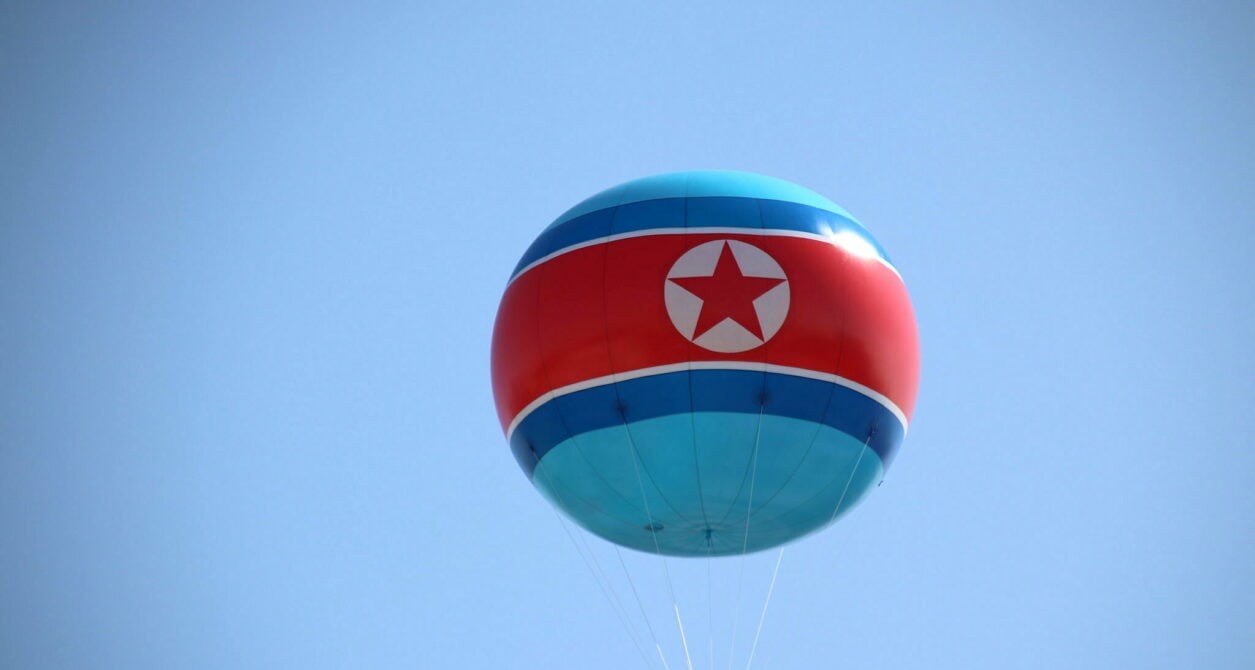On February 6, South Korea’s defense ministry disclosed that it had tracked a North Korean balloon above its territory.
In a statement, the Ministry of Defense said that the balloon briefly crossed South Korean airspace on Sunday. It also stated that unspecified “measures” had been taken in response.
The ministry did not reveal the balloon’s size, type, location, and where the military detected it.
According to a high-ranking military source cited by South Korean broadcaster KBS, a front-line unit in Yeoncheon, Gyeonggi Province, close to the inter-Korean border, discovered the balloon using a thermal observation device at about 6:30 p.m. KST on February 5.
The alleged North Korean balloon was spotted flying at a low altitude, and the South Korean military described it as a weather balloon. The local media outlets report that the ROK regularly detects weather balloons launched by soldiers from the DPRK.
That being said, the news of the North Korean balloon’s entry into South Korea’s airspace comes days after a suspected Chinese spy balloon caused a significant uproar by flying over the US mainland.
Beijing dismissed claims that it was a spy balloon. However, it acknowledged that it was Chinese, describing the balloon as a “civilian airship” that had veered off course and was mainly used for meteorological research.
Meanwhile, US Secretary of State Antony Blinken canceled a trip to China because of the balloon dispute.
A US F-22 fighter jet eventually brought down the balloon on Saturday. Responding to claims that the Chinese balloon had flown above military facilities in Montana, the Department of Defense stated that it had taken measures to prevent collecting sensitive information.
When reporters asked if the Chinese balloon entered Korean territory, Col. Jeon Ha-kyu, a South Korean defense ministry spokesman, stated that given South Korea’s monitoring capabilities and the balloon’s altitude, it probably did not fly into ROK territory.
“There was no trail detected via ROK air force radar at the time,” Jeon said.
However, US meteorologist Dan Satterfield outlining the possible flight path of the Chinese balloon, showed it may have flown over the southern tip of the Korean Peninsula.

Tense Relations Between Two Koreas
With the North executing a record number of missile launches last year and the South partnering with US allies in military displays of force, tensions between the two Koreas have increased.
On December 26, five North Korean drones crossed into the South, one of which briefly penetrated a no-fly zone around the South Korean presidential office, causing the military to launch fighter jets and helicopters.
The military came under fire for failing to shoot down the drones, which spent hours over the South.
Meanwhile, top military figures in North Korea have declared they will step up and intensify military exercises to maintain their readiness for war, state media reported on February 7.
The pledge was made during a meeting on Monday by leader Kim Jong Un and came after joint air drills between South Korea and the US that were held last week.
The most important item on the agenda reportedly was the need for the Korean People’s Army to continuously expand and increase its operations and combat training to perfect its preparedness for war.

The Central Military Commission of North Korea is meeting at a time when commercial satellite imagery indicates that major parade preparations are being made in Pyongyang in anticipation of key official festivals this month.
On February 8 and 16, respectively, North Korea commemorates the establishment of its armed forces and the “Day of the Shining Star.”
The latter is a national holiday in North Korea. It is the birth anniversary of Kim Jong Il, son of North Korea’s founder Kim Il Sung and father of Kim Jong Un.
Following a year of North Korea’s sanctions-breaking missile tests, Seoul and Washington have taken steps to strengthen joint military exercises, infuriating Pyongyang, which views them as training for an invasion.
In fact, strategic bombers and stealth fighters recently participated in combined air drills, prompting Pyongyang to warn that such activities could “ignite an all-out showdown.”
- Contact the author at ashishmichel(at)gmail.com
- Follow EurAsian Times on Google News




